
Hydrangeas, a traditional garden staple, are back in fashion in a big way.
The stunning flower heads in a range of colors and shapes grace our gardens in summer and into fall, depending on the variety.
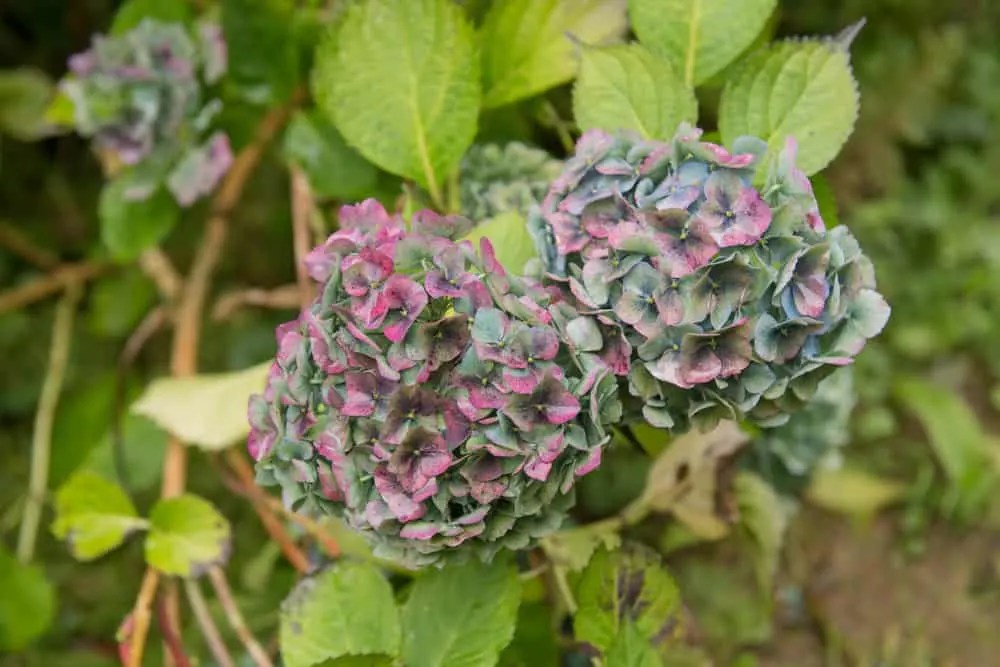
Unfortunately, their beauty doesn’t last all year.
Once the flowers and foliage die back in fall, you’ll need to head out into the garden for your annual hydrangea maintenance session. These tasks are vital to keeping your plants looking great and ensuring they come back even stronger the following year.
This maintenance can be tricky, especially when it comes to pruning. Complete these five essential jobs this fall to set your plants up for the coming seasons.
1. Pick Remaining Flowers
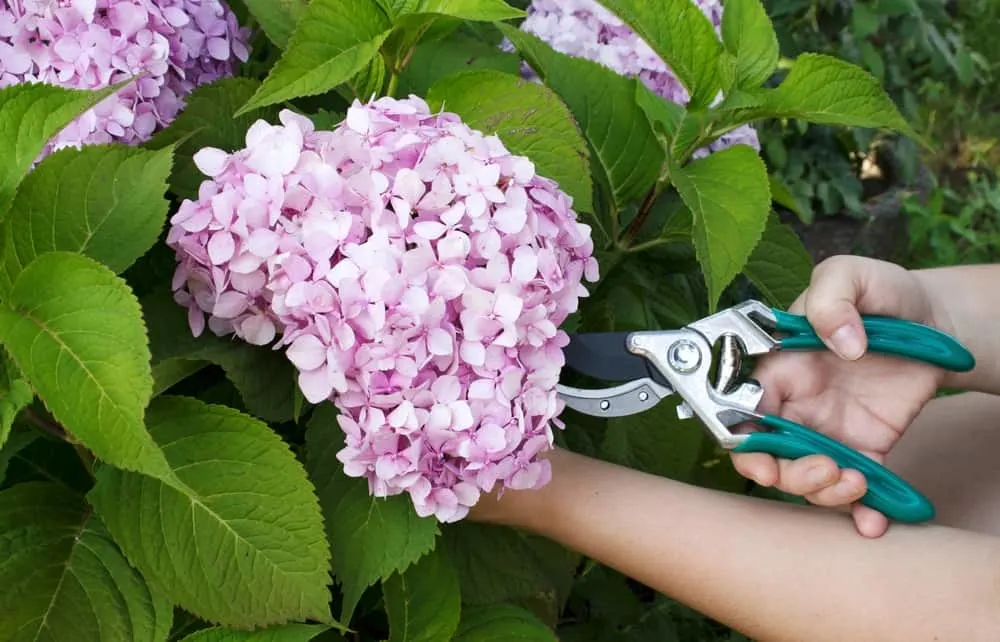
If you’re lucky enough to have a few flowers still on the plant, cut them now to bring their beauty indoors. Hydrangeas look fantastic in cut flower displays at any time of the year.
In early fall, when everything else begins to die down, bringing the remaining flowers indoors will prolong their season just that little bit longer.
Those looking to extend their enjoyment past a couple of extra days can also dry the flower heads.
Dried flower bouquets are dominating social media feeds at the moment and look great in any part of your home. They require far less maintenance than fresh bouquets and continue to be a stunning décor piece after several weeks in a vase.
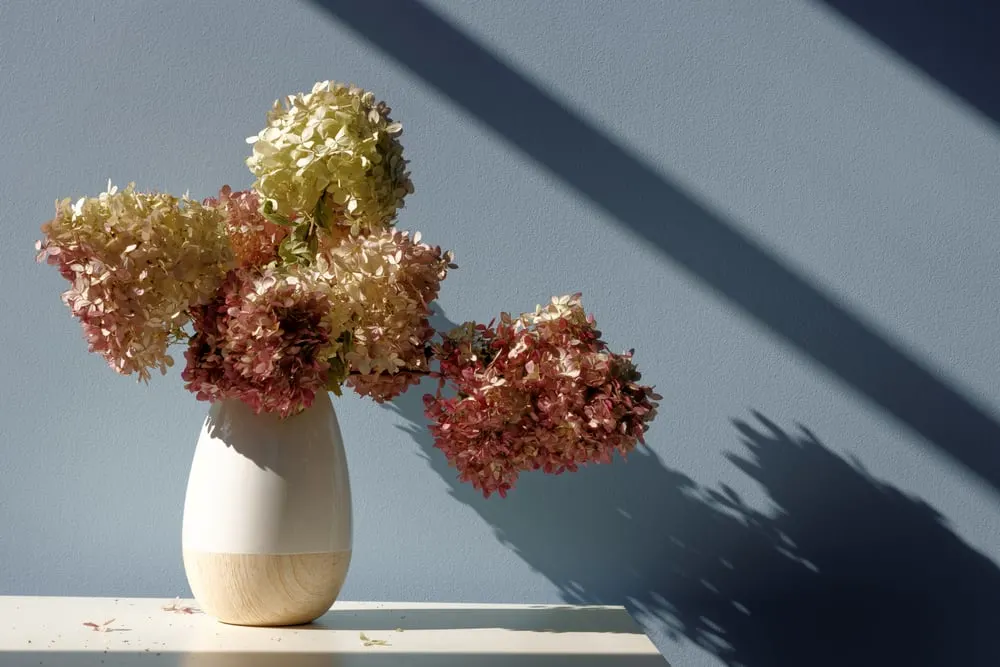
To dry, you have several options.
The first, and by far the easiest, is to simply leave them in a vase without water to dry naturally. You can also hang them upside down in a dry area.
Alternatively, if you’re incredibly impatient, pop them in your car and leave them in the sun for 1-2 days. This method only works in hot weather but is guaranteed to dry the flowers the fastest.
For more on the best flowers to grow for dried flower displays and how to dry them, take a look at our article here.
2. Prune
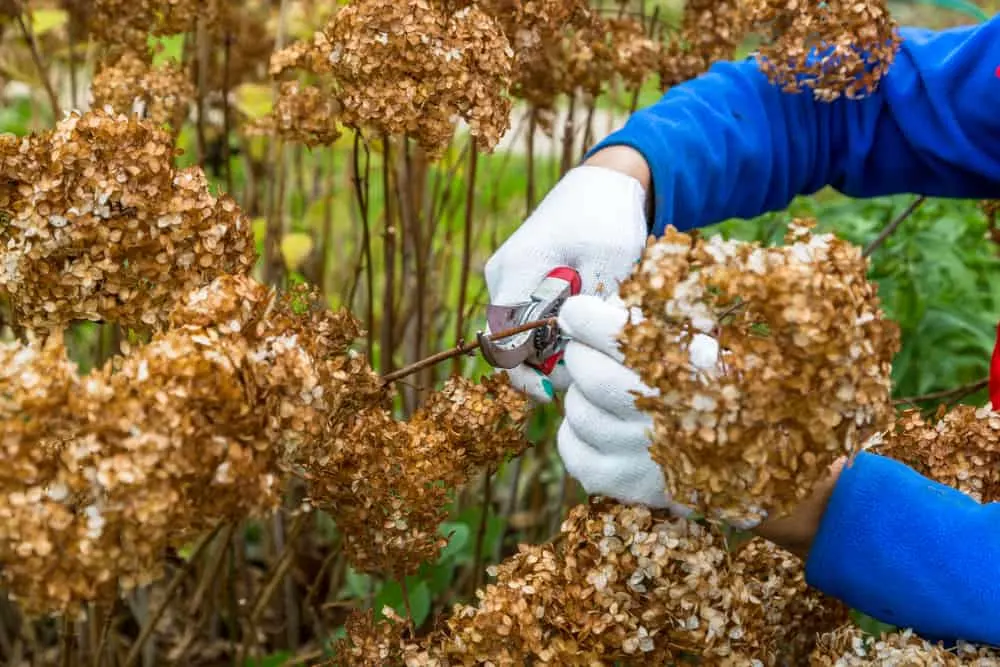
Pruning hydrangeas is not an essential task, and most won’t need to be pruned for several years. However, after long periods of time, hydrangeas can grow quite large and quickly get out of hand. If you like to keep your garden meticulously groomed, pruning may be on the cards.
However, pruning isn’t as simple as arming yourself with some pruning shears and chopping a few stems. Pruning the wrong variety at the wrong time or in the wrong way could completely destroy any chance of your plant flowering the next season.
Only hydrangeas that flower in fall should be pruned in this season.
These include varieties that flower on new wood, such as Hydrangea paniculata or Hydrangea arborescens, known as peegee hydrangeas and smooth hydrangeas respectively.
Depending on the size of the plant, they can be cut back all the way to the ground, given a light trim, or left to grow naturally. The choice in yours. These plants are vigorous growers and will emerge again the following season without trouble.
Summer-flowering hydrangeas like the popular mophead or oakleaf should only be pruned in midsummer. These flowers bloom on old wood from buds developed the season before. If you cut these buds off in fall, you will have no flowers the following season.
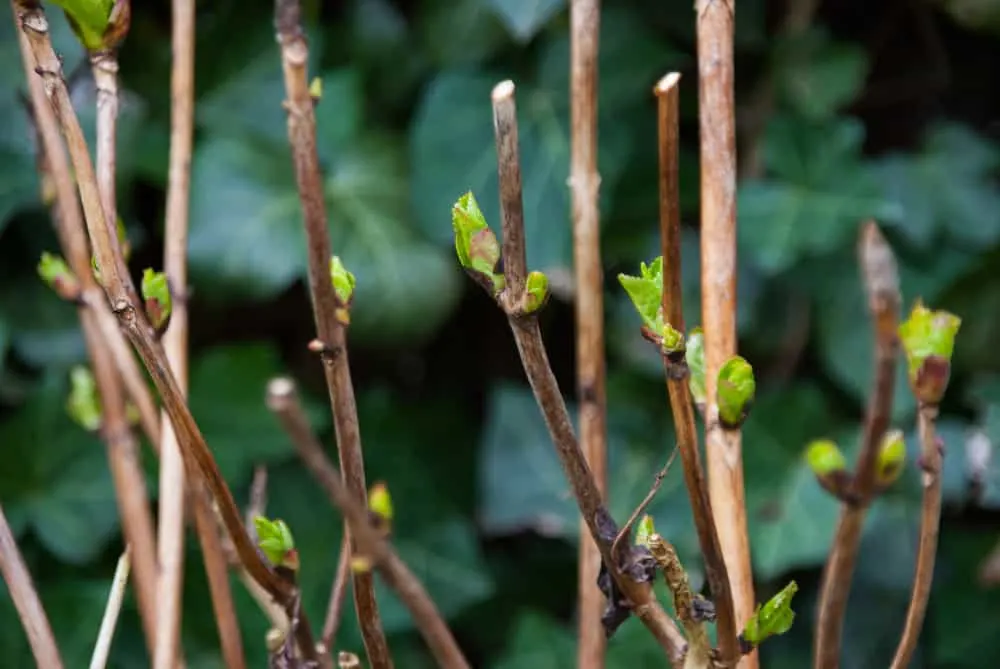
Other essential pruning steps, like removing spent flowers and dying branches, can be done any time of year. Always use a sharp pair of pruning shears to avoid damaging the branches and jeopardizing new growth.
3. Tidy
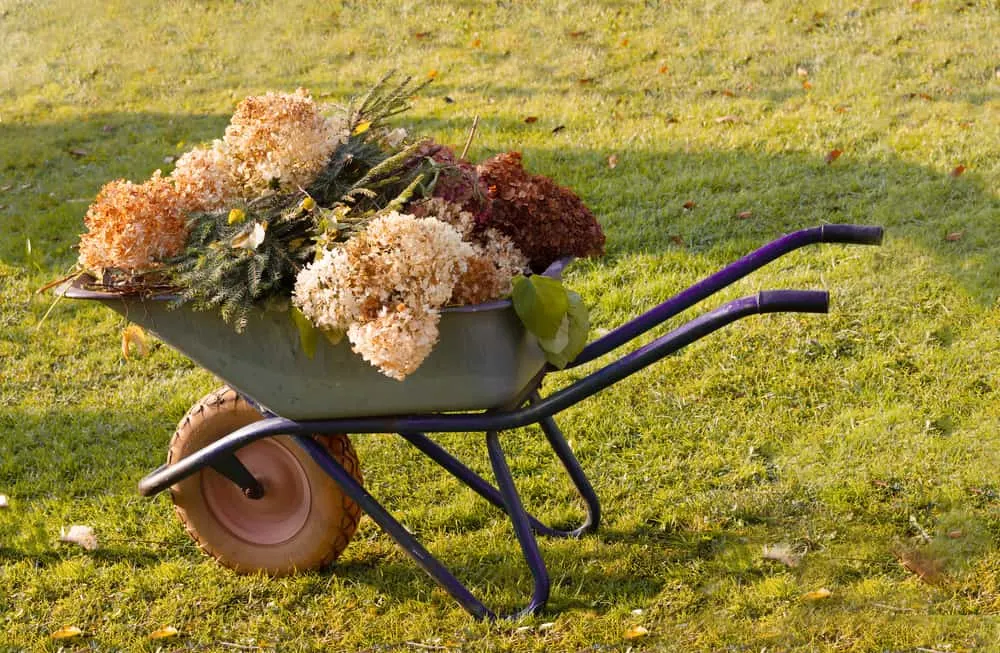
With your hydrangea pruned and looking its best, you can begin to tackle the task almost all gardeners avoid – tidying.
Neatening up around the base of the plants can be tedious and labor-intensive, but is a necessity to ensure your plants stay healthy. Debris left around the plants, especially in fall, can become a safe haven for nefarious pests and diseases that will take hold when the plant begins to grow again in spring.
Remove any fallen leaves and flowers around the base of your plant. Keep up this cleaning throughout the season as more parts of the plant fall in response to cooler temperatures. As long as the plant is disease-free, you can throw all this debris on your compost heap.
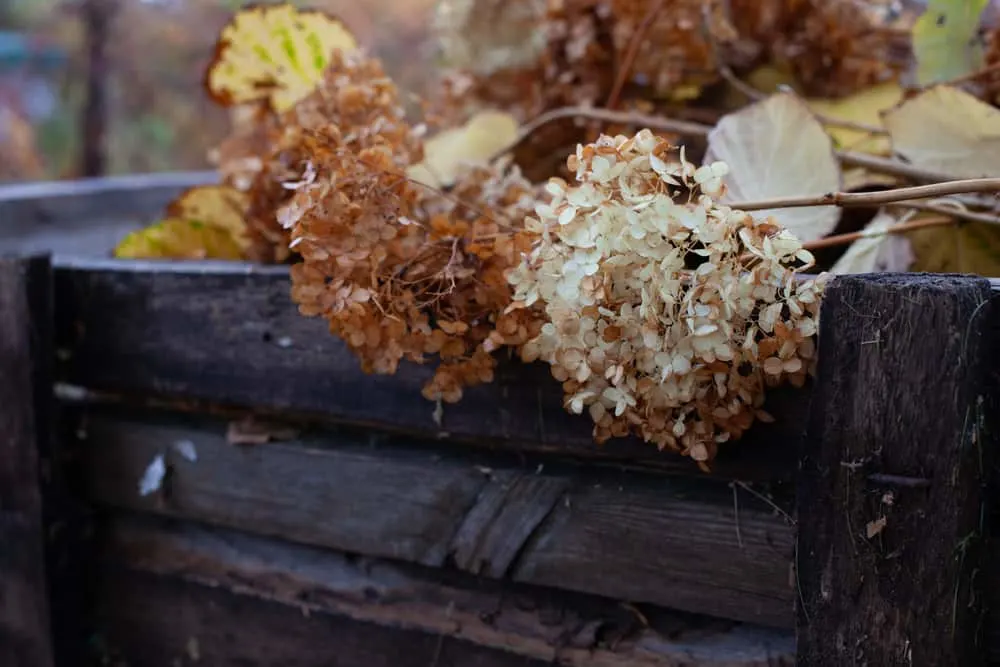
At the same time, remove any branches you notice trailing on the ground. This will lift the plant, improving airflow at the base, and stops any diseases from taking hold on dying or rotting branches touching the soil.
4. Mulch
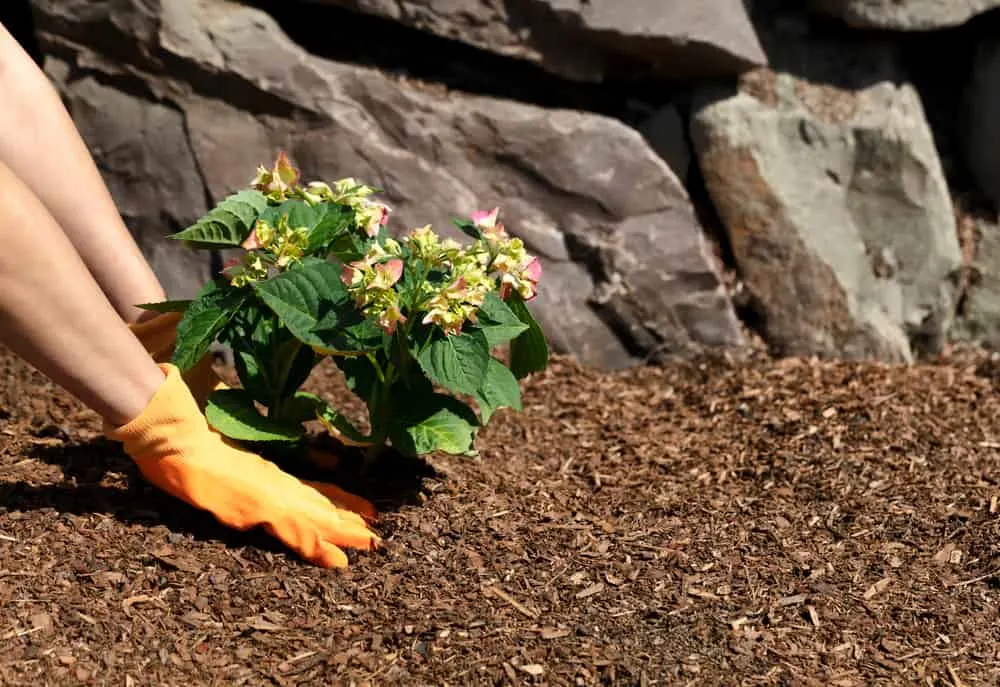
Mulching in fall is another task that may not be essential for every gardener, but could be a great help in the right situation.
Those in colder areas with plenty of frost or harsh winters will need to mulch as the cold weather sets in. This insulates the soil and keeps the roots protected from potential damage.
Mulching also retains moisture and keeps weeds from growing, especially important when temperatures begin to pick up again in early spring.
A layer of organic mulch, such as bark chips or straw, is ideal as they will slowly break down into the soil over time. About two inches should be sufficient in most climates, but particularly cold areas can make that layer slightly thicker.
With your fall hydrangea jobs out of the way, you can sit back as the plants die down over winter. In spring, the foliage will return, surrounding carpets of stunning flowers throughout summer to look forward to.
